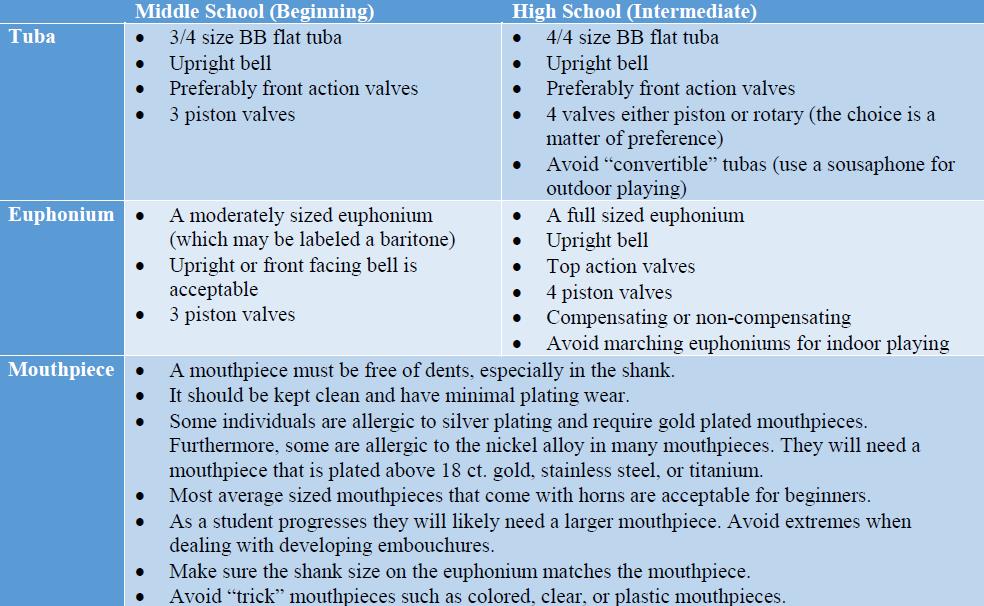|
Beware of “off-brand” or gimmicky instruments. Ask yourself, “why is this instrument less expensive?” It is probably due to cheaper raw materials and a less expensive manufacturing process. Ask your local repairman if they would feel comfortable repairing the instrument. Then determine the next time you or your program will be able to afford a new tuba or euphonium. It will probably be quite a while! If properly maintained and stored this purchase can be with your program for many years so purchase wisely!
Every tuba or euphonium (used or new) should have valves that are freely moving with minimal lubrication, moving slides (all of them), and should be absent of leaks and large dents. It is important to have adequately secured braces. It is acceptable to have lacquer or sliver plating and lacquer is less expensive. It is important that the instrument is ergonomically designed to fit the average size of your students. The student must be able to hold the instrument and maintain proper posture and hand position. Awkward posture or discomfort will inhibit airflow and technique. With tubas this is often evident in the wrapping of the tubing. With euphoniums pay particular attention to the intended left hand placement. Ask a local professional to test an instrument before you make a purchase. My personal criteria is as follows: Is the intonation of the overtone series reasonably consistent? Is the instrument open and free blowing? Is the sound warm and resonant? Is the response consistent in varied registers or dynamic levels? Is it easy to slur or to articulate clearly? Is the instrument easy to play?
0 Comments
|
Archives
October 2021
Categories |


 RSS Feed
RSS Feed